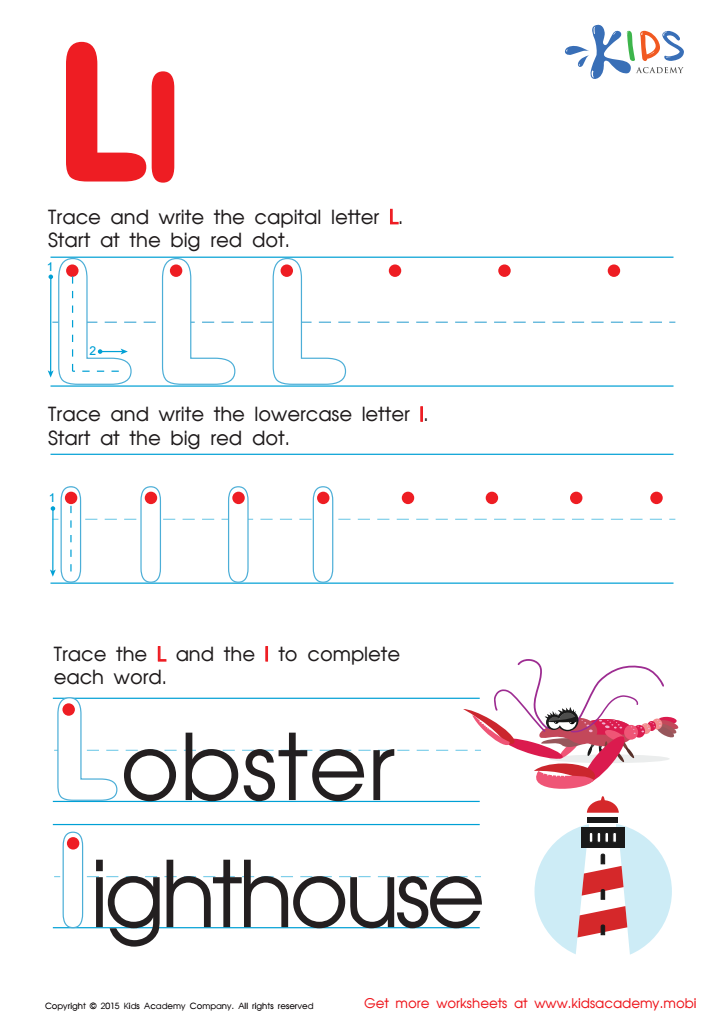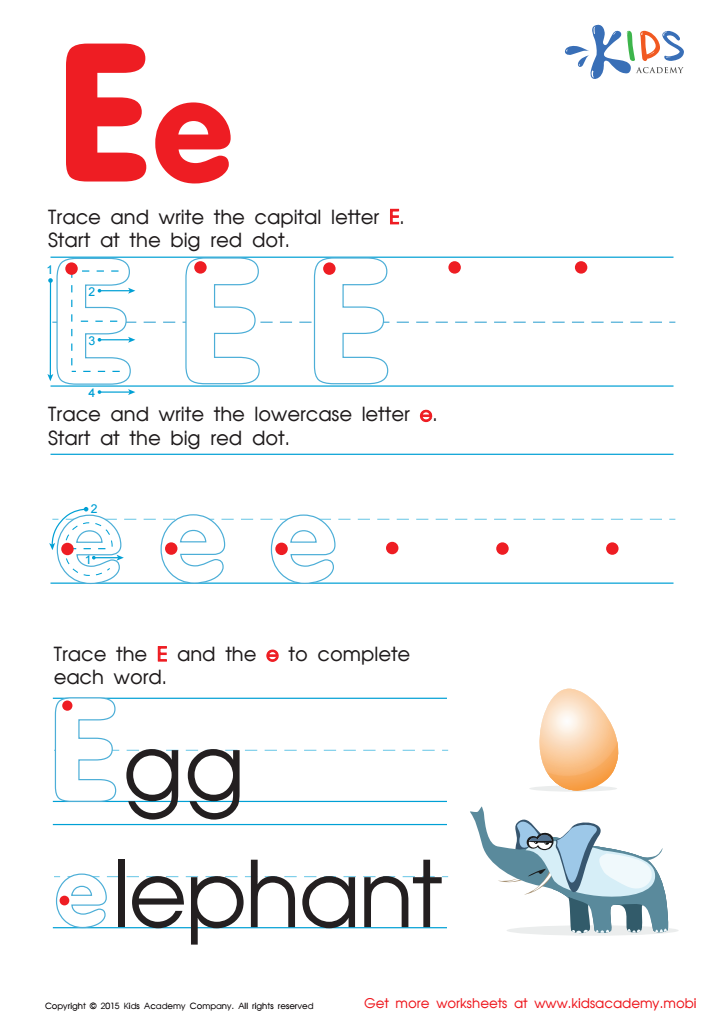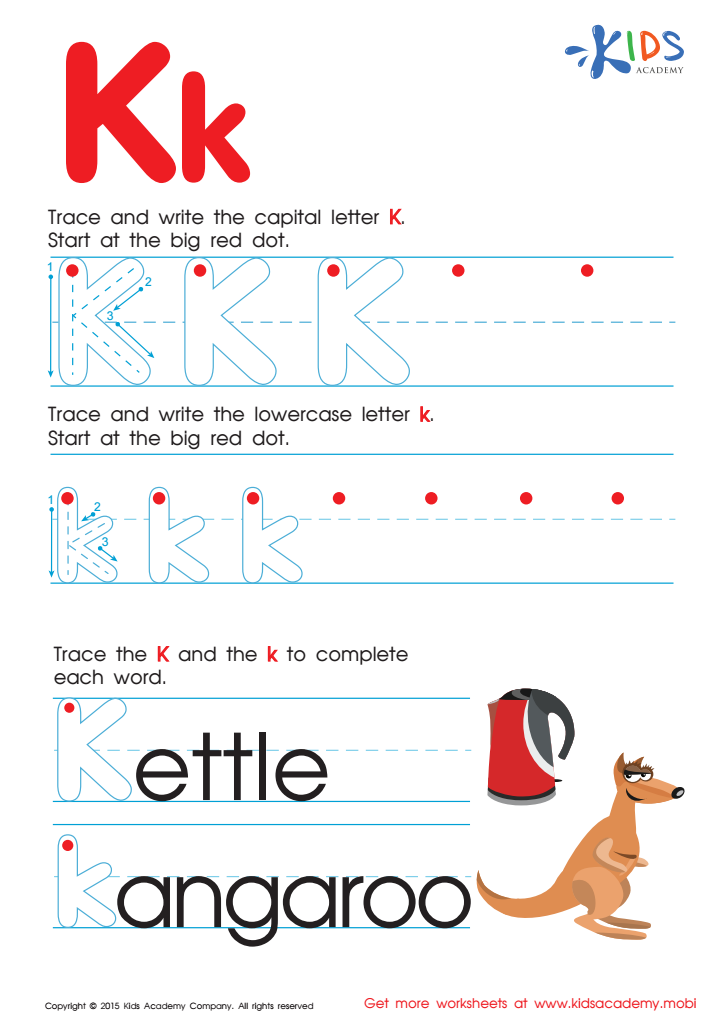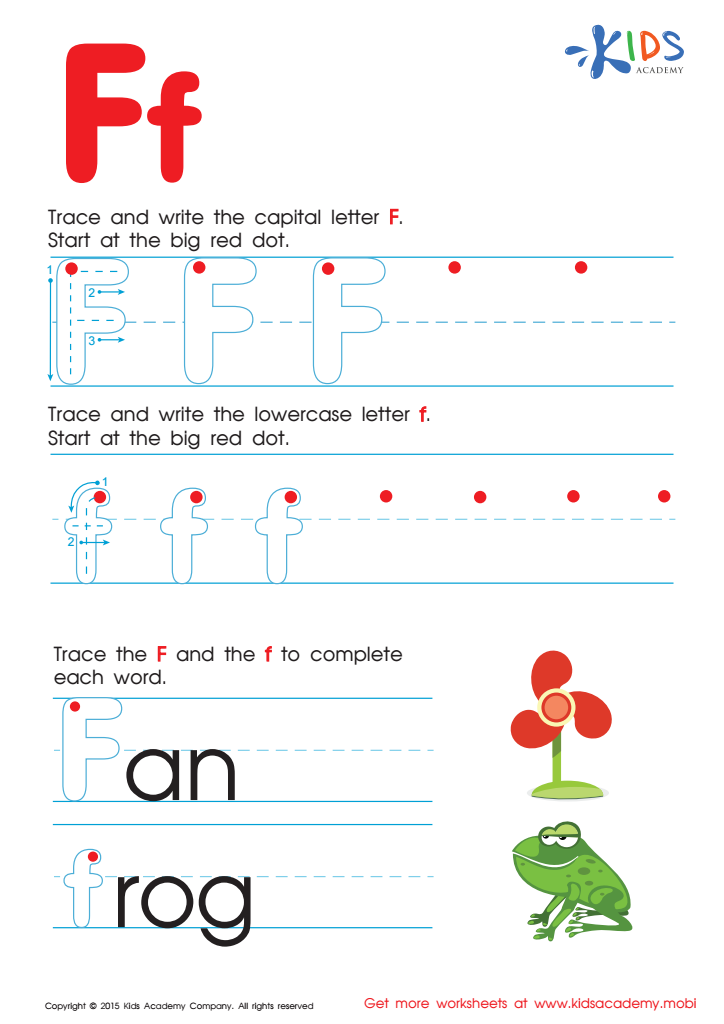Handwriting Skills Normal Tracing Letters Worksheets for 4-Year-Olds
5 filtered results
-
From - To
Welcome to our Handwriting Skills Normal Tracing Letters Worksheets, specially designed for 4-year-olds! Our interactive and engaging worksheets provide a fun way for young learners to enhance their fine motor skills and hand-eye coordination. These activities focus on tracing letters to help preschoolers familiarize themselves with the alphabet while building confidence in their writing abilities. With colorful illustrations and easy-to-follow instructions, toddlers will enjoy practicing their handwriting in an encouraging environment. Perfect for home or classroom use, these tracing worksheets are ideal for promoting early literacy and ensuring a solid foundation for future academic success. Dive in and watch your child flourish!


Letter Q Tracing Page


Letter L Tracing Page


Letter E Tracing Page


Letter K Tracing Page


Letter F Tracing Page
Handwriting skills are foundational for a child's educational development, especially for 4-year-olds who are just beginning to explore writing. Focusing on normal tracing letters is crucial for several reasons. First, it enhances fine motor skills, crucial for overall coordination and dexterity, which affect various daily tasks beyond writing. By tracing letters, children develop muscle memory, learning how to control their hand movements effectively.
Secondly, it fosters cognitive development. As children trace, they practice recognizing and differentiating letters, which aids in phonemic awareness and early literacy. This skill is instrumental for future reading and writing abilities.
Moreover, handwriting contributes to a child’s self-esteem and satisfaction. The ability to produce letters clearly empowers them and motivates them to engage in writing activities more willingly. Furthermore, learning proper letter formation instills good habits from an early age, which helps prevent frustration and difficulties later in their academic journey.
Lastly, tracing activities often become a fun and interactive experience, creating a positive association with writing. By prioritizing handwriting skills in early education, parents and teachers lay the groundwork for success, making it a key element of early literacy development.
 Assign to My Students
Assign to My Students




















